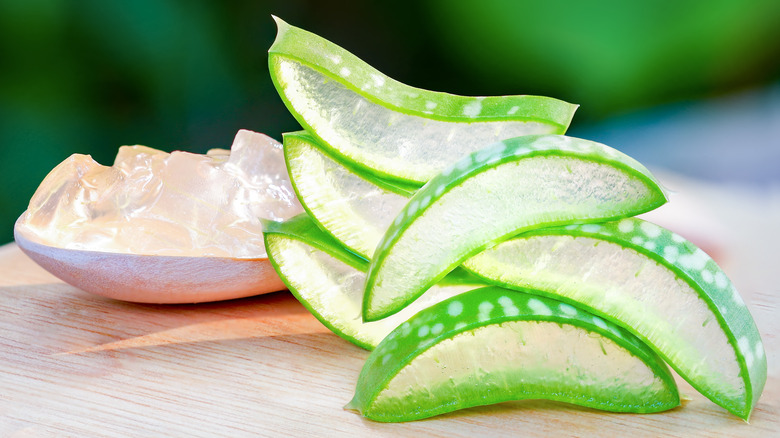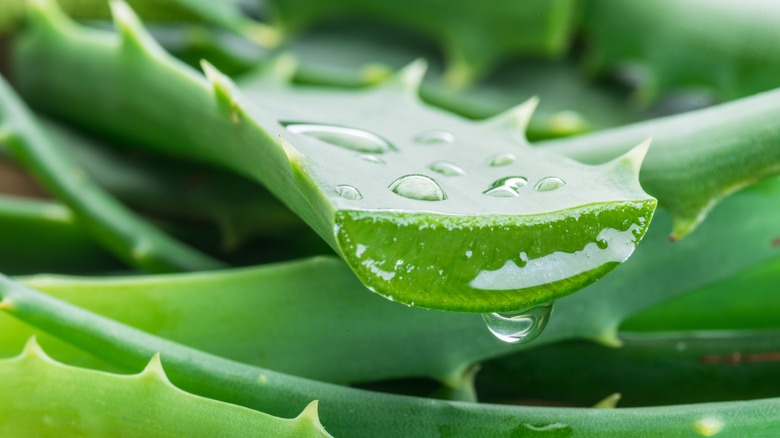Is It Safe To Eat The Skin Of An Aloe Vera Plant?
When you think of aloe vera, you may immediately flash back to a terrible sunburn and the cooling effects of the fun-to-say remedy you applied to it. Aloe vera can be more than a burn remedy. In fact, some of its benefits require that you eat it.
Aloe vera comes from a green-colored plant that has been used for centuries for its various advantages (per Indian Journal of Dermatology). The triangular spiny leaves are composed of multiple layers that provide nutrients and numerous overall health benefits. Aloe vera contains vitamins A, C, E, B12, choline, and folic acid, along with enzymes that can break down fats and sugars and essential minerals, such as calcium, chromium, copper, selenium, magnesium, and potassium, among others.
According to Medical News Today, aloe vera is most often used as a topical medication due to its antioxidant and antibacterial properties that can accelerate wound healing and treat skin problems. While often used in skin moisturizing and anti-aging products, these properties can even apply to treating mouth ulcers and reducing dental plaque. When consumed, the different portions of the leaf can provide other reactions, such as blood sugar management and constipation relief. But is it safe to eat all portions of an aloe vera plant, including the skin?
Aloe vera skin is edible
The leaves of an aloe vera plant are made of gel, latex, and the outer skin (via Healthline). The clear gel is the innermost layer and the portion most often used medicinally, both externally on the skin and internally when eaten. Eating this nutrient-rich portion can help improve learning, boost antioxidant levels, and reduce inflammation.
The layer on top of the gel is yellow latex and tastes bitter. This portion contains aloin, which can work as a laxative for constipation but may also have adverse effects. Aloe latex may promote cancer growth, and prolonged use can lead to diarrhea, abdominal pain, vomiting, and changes to the colon (per the Journal of Environmental Science and Health). In 2002, the FDA banned laxative products containing aloe vera because they were not "generally recognized as safe and effective" (via International Agency for Research on Cancer).
The outer skin of the leaf is generally safe to eat after thoroughly washing off any dirt or debris and can be used as a vessel for dipping or an ingredient in salads (per Healthline). In an interview with Public Goods, Wendy Bazilian, a nutritionist and doctor of public health, described eating the skin "...like a firm cucumber skin and a bit less firm than crunchy celery". So when it comes to aloe vera, you can use it to treat your skin, boost your nutrition, or enhance a healthy meal, as long as you steer clear of the middle latex portion.

